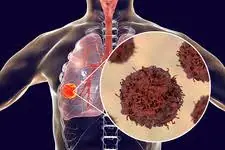If you’ve ever experienced a persistent feeling of mucus stuck in your throat, you’re not alone. While mucus plays an essential role in protecting and lubricating the respiratory system, excessive mucus buildup can be irritating and may indicate an underlying health issue.
Let’s explore the real causes of mucus accumulation in the throat and what you can do to manage it effectively.
Common Causes of Mucus in the Throat
 Postnasal Drip
Postnasal Drip
Postnasal drip occurs when excess mucus from the nasal passages drips down the back of the throat. This can be caused by:




 Acid Reflux (GERD)
Acid Reflux (GERD)
Gastroesophageal reflux disease (GERD) can cause stomach acid to travel up into the throat, leading to irritation and excess mucus production.





 Respiratory Infections
Respiratory Infections
Colds, flu, bronchitis, and pneumonia can all lead to increased mucus production.




 Allergies
Allergies
If you suffer from seasonal allergies, exposure to allergens like pollen, mold, or pet dander can trigger excessive mucus production.




 Smoking and Pollution
Smoking and Pollution
Smoking and exposure to air pollutants can cause the body to produce thick, sticky mucus in an attempt to protect the airways.




 Dehydration
Dehydration
Not drinking enough water can make mucus thicker and harder to clear from the throat.



When to See a Doctor?





Final Thoughts
Mucus buildup in the throat can be uncomfortable, but understanding the underlying causes can help you manage it effectively. By making lifestyle changes and addressing the root cause, you can keep your throat clear and healthy.

Why does woman underwear smells bad? Causes and Solutions

Lung Cancer Symptoms: How They Differ in Men and Women
Lung cancer is the second most common cancer in both men and women. For men, prostate cancer is the most prevalent, while breast cancer tops the list for women. While lung cancer affects both sexes nearly equally, the symptoms and warning signs can vary significantly due to differences in the types of lung cancer each sex typically develops. Recognizing these symptoms early can make a critical difference in diagnosis and treatment.
Lung Cancer in Women
The most common type of lung cancer in women is adenocarcinoma. This form of lung cancer often develops in the outer regions of the lungs, making symptoms less noticeable in the early stages. As a result, adenocarcinoma tumors can grow significantly and spread before they are detected, making early diagnosis crucial.
Early Symptoms of Lung Cancer in Women:



Symptoms as the Cancer Progresses:








Since adenocarcinoma is often detected late, it can spread to other parts of the body before diagnosis. This can lead to a range of symptoms depending on where the cancer has metastasized.
Symptoms of Advanced Lung Cancer in Women:










Lung Cancer in Men
Men are more likely to develop squamous cell carcinoma, a type of non-small cell lung cancer. This form of lung cancer typically grows in the central part of the lungs, near the main airway (bronchus). Because of its location, this type of lung cancer often leads to airway obstruction, making symptoms more noticeable earlier than adenocarcinoma.
Common Symptoms of Lung Cancer in Men:



While these symptoms may seem more obvious, research shows that men are more likely to ignore or downplay them—often due to smoking habits or lifestyle factors.
Why Early Detection Matters
Both men and women should be vigilant about their lung health and take symptoms seriously. Lung cancer symptoms are often mistaken for common respiratory illnesses, which can delay diagnosis.



How to Reduce Your Risk of Lung Cancer





Lung cancer symptoms should never be ignored. Understanding the warning signs specific to men and women can help with early diagnosis and treatment, ultimately improving survival rates. If you or someone you know has persistent symptoms, don’t wait—get checked by a healthcare professional.







